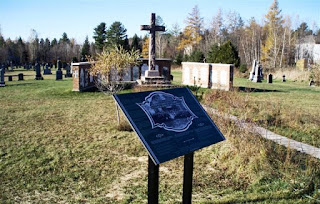The church exemplifies cultural hybridity, being a Byzantine-styled church, built for Irish Catholics, in a multicultural neighbourhood, and being home today to mostly Poles and Italians. The church has also been noted for its Byzantine Revival architecture, complete with a dome and minaret-styled tower, making it "one of the more unique examples of church architecture in Montréal.
Construction on the Church of St. Michael the Archangel began in 1914, for what would grow to become the largest anglophone parish in Montreal. After a brief delay following the commencement of World War I, the church was completed in 1915 at a cost of $232,000, with a capacity of 1,400 people.
Though Mile End was originally a predominately Irish neighbourhood, the Polish community grew such that the two communities "merged into one", and to reflect this change, St. Anthony was appended to the parish name, reflecting the "Conventual Franciscans' devotion to St. Anthony of Padua."
Today, the church is recognised as the focal point for the Polish Catholics of Montreal.
The church was built in the Neo-Byzantine style of architecture, accompanied by a large turquoise dome and minaret-style tower. It was designed by architect Aristide Beaugrand-Champagne [fr] (1876–1950), who was inspired by the Hagia Sophia (originally an Orthodox basilica) in Istanbul (formerly Constantinople). The church also features elements of Gothic and Roman architecture, as well as lombard bands and window tracery reminiscent of Middle Ages castles.
The church's dome features one of the first uses of reinforced concrete in Quebec.
The interior roof of the dome features a neo-Renaissance-style fresco of St. Michael watching the fall of the angels, painted by Italian Guido Nincheri, who painted other churches in Montreal.
 |
| Bertha Burns 1892 - 1955 |
Bertha was born in 1892 in Quebec City to George Burns and Elizabeth Williamson, the youngest of four children, the others being Albert, William, and Ethel. She and her mother, Elizabeth moved to Mile End in Montreal around 1920 after the death of her father George.
Bertha married Ovila Bernard in 1925 and they had four children, Norman, Pauline, George, and Lorne.
Bertha only had two grandchildren as Norman and George died young and never married. She never knew her only grandson as he was born 9 years after her death.
She was able to enjoy her only grand-daughter for four years, it would have to be enough as fate took the child to the United States and Bertha would die under mysterious circumstances three years later.

























